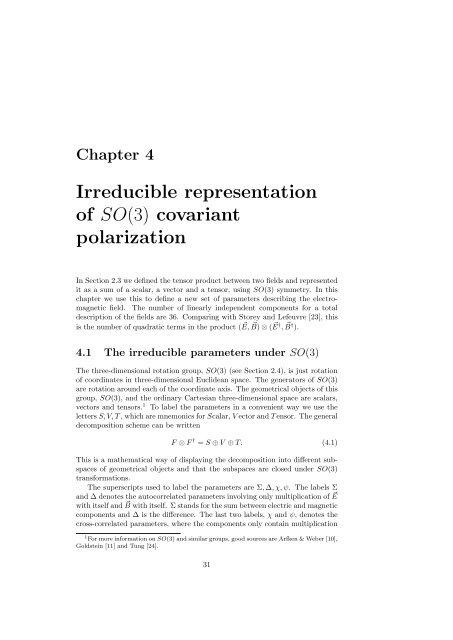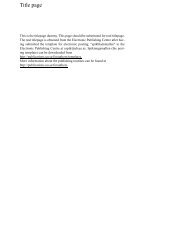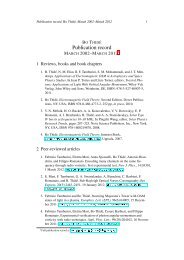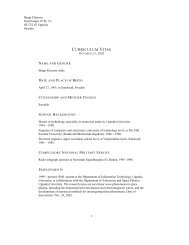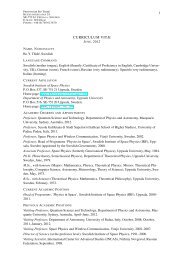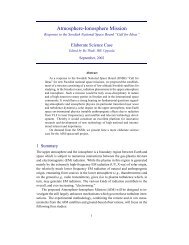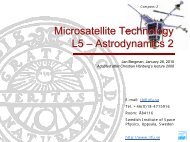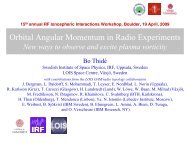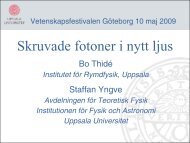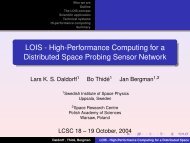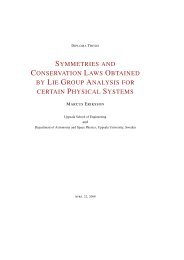Towards a covariant formulation of electromagnetic wave polarization
Towards a covariant formulation of electromagnetic wave polarization
Towards a covariant formulation of electromagnetic wave polarization
You also want an ePaper? Increase the reach of your titles
YUMPU automatically turns print PDFs into web optimized ePapers that Google loves.
Chapter 4<br />
Irreducible representation<br />
<strong>of</strong> SO(3) <strong>covariant</strong><br />
<strong>polarization</strong><br />
In Section 2.3 we defined the tensor product between two fields and represented<br />
it as a sum <strong>of</strong> a scalar, a vector and a tensor, using SO(3) symmetry. In this<br />
chapter we use this to define a new set <strong>of</strong> parameters describing the <strong>electromagnetic</strong><br />
field. The number <strong>of</strong> linearly independent components for a total<br />
description <strong>of</strong> the fields are 36. Comparing with Storey and Lefeuvre [23], this<br />
is the number <strong>of</strong> quadratic terms in the product ( E, ⃗ B) ⃗ ⊗ ( E ⃗ † , B ⃗ † ).<br />
4.1 The irreducible parameters under SO(3)<br />
The three-dimensional rotation group, SO(3) (see Section 2.4), is just rotation<br />
<strong>of</strong> coordinates in three-dimensional Euclidean space. The generators <strong>of</strong> SO(3)<br />
are rotation around each <strong>of</strong> the coordinate axis. The geometrical objects <strong>of</strong> this<br />
group, SO(3), and the ordinary Cartesian three-dimensional space are scalars,<br />
vectors and tensors. 1 To label the parameters in a convenient way we use the<br />
letters S, V, T , which are mnemonics for Scalar, V ector and T ensor. The general<br />
decomposition scheme can be written<br />
F ⊗ F † = S ⊕ V ⊕ T. (4.1)<br />
This is a mathematical way <strong>of</strong> displaying the decomposition into different subspaces<br />
<strong>of</strong> geometrical objects and that the subspaces are closed under SO(3)<br />
transformations.<br />
The superscripts used to label the parameters are Σ, ∆, χ, ψ. The labels Σ<br />
and ∆ denotes the autocorrelated parameters involving only multiplication <strong>of</strong> ⃗ E<br />
with itself and ⃗ B with itself. Σ stands for the sum between electric and magnetic<br />
components and ∆ is the difference. The last two labels, χ and ψ, denotes the<br />
cross-correlated parameters, where the components only contain multiplication<br />
1 For more information on SO(3) and similar groups, good sources are Arfken & Weber [10],<br />
Goldstein [11] and Tung [24].<br />
31


